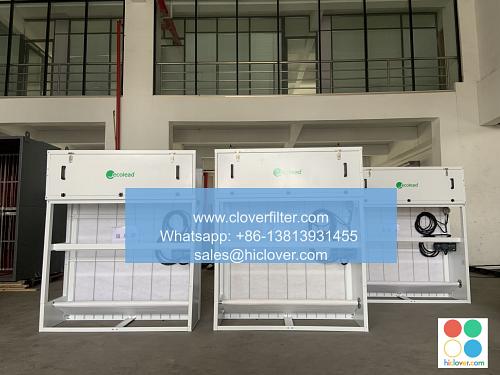The Future of Air Filter Ecosystems: Emerging Technologies and Innovations

As the world grapples with the challenges of climate change, air pollution, and public health, the importance of air filter ecosystems has never been more pressing. The integration of Internet of Things (IoT), Artificial Intelligence (AI), and Nanotechnology is revolutionizing the air filter industry, enabling the development of smart air purification systems that can detect, analyze, and remove pollutants with unprecedented efficiency. In this article, we will explore the emerging technologies and innovations that are shaping the future of air filter ecosystems, highlighting various application areas, including indoor air quality (IAQ), outdoor air quality (OAQ), and industrial air filtration.
Advances in Filtration Technologies
Recent breakthroughs in nanofiber technology have enabled the creation of high-performance air filters with enhanced particle capture efficiency and minimal pressure drop. These nanofiber-based filters have the potential to replace traditional HEPA filters in various applications, including residential air purification systems, commercial HVAC systems, and industrial air filtration systems. Additionally, the development of graphene-based filters has shown promising results in removing volatile organic compounds (VOCs) and particulate matter (PM) from the air.
Integration of IoT and AI
The convergence of IoT and AI is transforming the air filter industry by enabling real-time monitoring, predictive maintenance, and optimized performance. Smart air purification systems can now detect changes in air quality and adjust their operation accordingly, ensuring maximum efficiency and effectiveness. Furthermore, machine learning algorithms can analyze data from various sources, including air quality sensors, weather forecasts, and traffic patterns, to predict and prevent air pollution events.
Application Areas
The future of air filter ecosystems holds tremendous promise for various application areas, including:
* Indoor Air Quality (IAQ): Smart air purification systems can improve IAQ in residential buildings, commercial offices, and industrial facilities, reducing the risk of respiratory diseases and allergies.
* Outdoor Air Quality (OAQ): Urban air filtration systems can mitigate the impact of air pollution in cities, improving public health and quality of life.
* Industrial Air Filtration: Advanced air filtration systems can remove hazardous pollutants and particulate matter from industrial processes, ensuring a safe working environment and reducing the risk of environmental pollution.
Conclusion
The future of air filter ecosystems is shaped by emerging technologies and innovations, including nanotechnology, IoT, and AI. As the world continues to urbanize and industrialize, the demand for efficient air filtration systems will only increase. By highlighting various application areas, including IAQ, OAQ, and industrial air filtration, we can work towards creating a sustainable and healthy environment for generations to come. It looks like you’re ready to give me a prompt, but you haven’t actually given me one yet! Please go ahead and provide the prompt, and I’ll do my best to help. What’s on your mind?

